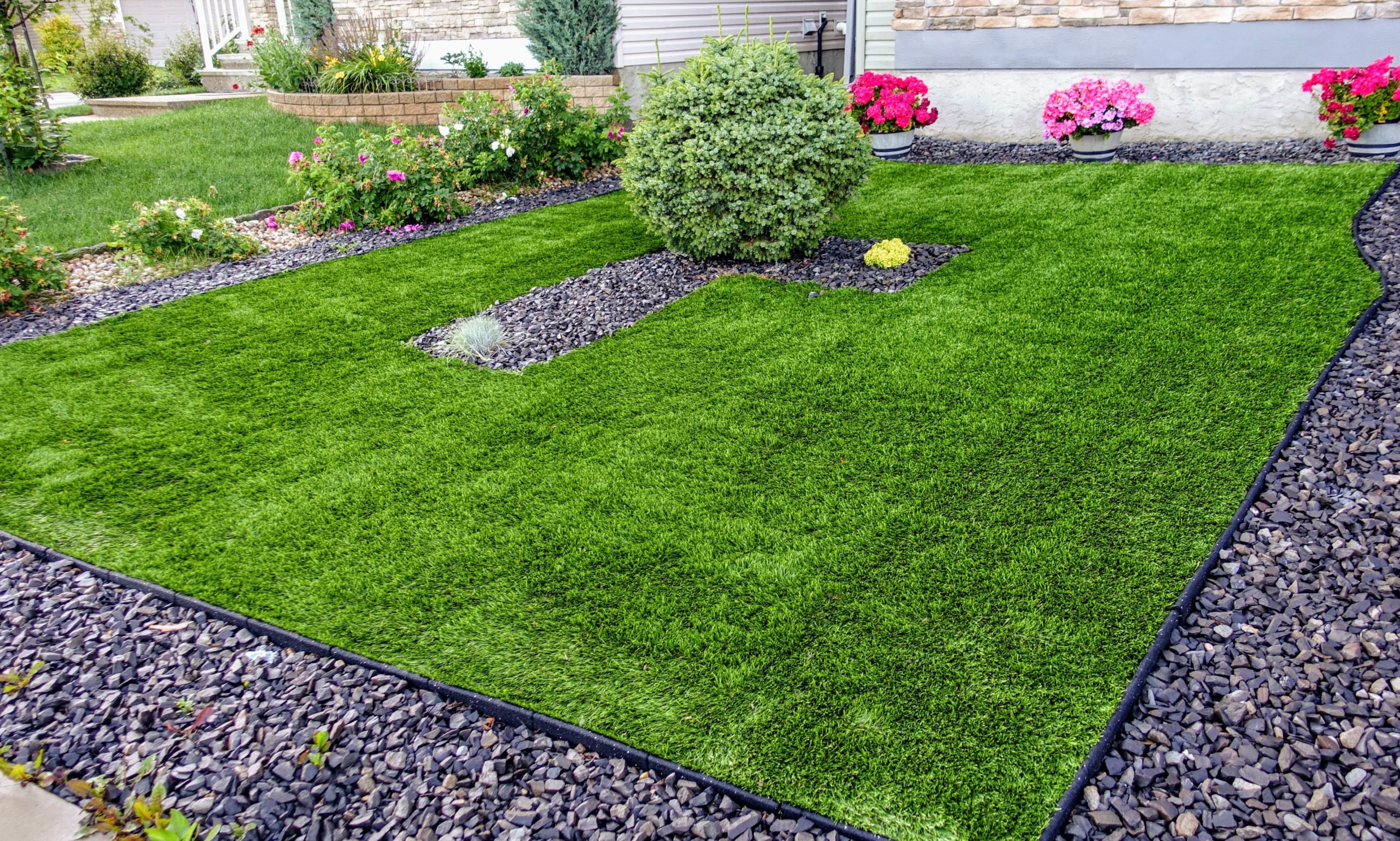If you’re a homeowner who loves the look of a well-kept, meticulously manicured lush green lawn, but hates all the upkeep and maintenance that goes into lawn care, then artificial grass could be an excellent option.
Artificial grass earned its name AstroTurf in 1966 when it made its debut in the NRG Astrodome in Houston, Texas. Since then, it was most commonly used for sport applications, like a football or baseball field, soccer complexes, and batting cages. But it’s come a long way since its initial invention and has become so lifelike and useful, that more business owners and homeowners are using artificial grass for their lawns.
Artificial turf can be a worthwhile investment. Although the initial costs can be high, you will spend less time and money on yard maintenance for years to come. If you’d like to learn how to install your own artificial grass, then keep reading for more!
What is Artificial Turf?
Artificial grass is made of synthetic, man-made fibers that look like real glass. The synthetic blades are green and come in different heights to mimic the look of real grass. Each blade of grass is machine stitched into a solid backing, with some brown thatched weaved in at the bottom to have more of a lifelike appearance.
How to Buy Artificial Turf?
Artificial grass is sold at most landscaping and garden centres or hardware stores. You will have to measure out your yard, or designated area. To calculate the area of your rectangular or square artificial turf installation, multiply the length of the turf strip you need by the width. In cases of triangular, circular, or L-shaped lawns, you’ll have to calculate the area of each strip of turf required and then add them up to arrive at the total amount. In order to do this, it is helpful to divide your lawn into a series of rectangular shapes, measure them out, then add them together.
Artificial grass will arrive in a roll, much like carpet. Unroll the artificial grass roll and allow it to rest and take its natural shape 30 minutes to an hour before installing.
Step 1: Remove the Lawn
Say goodbye to your current lawn! It is good to remove 4 to 6 inches of your existing base. Always keep in mind that soil can build up very quickly, so it is wise to have a dump trailer on site. You will also have to check with your city bylaws for organic waste removal.
Step 2: Add Base
Once you have removed the earth, you will need a level base on which to lay your artificial grass. We would recommend builder’s sand, class 2 road base, or another source of aggregate. You need a material that will spread uniformly but also allow for proper drainage. Spread this out over the area, and tamper it down to ensure a level base.
Adding a weed barrier or gopher wire will reduce the chance of weeds or pests growing up through the turf. Weed barriers are not recommended if you have pets, of course. Allow the edges of the weed barrier to overlap at any joints by several inches, trimming with a utility knife, and securing into place with landscaping staples. You will then to lightly wet the area and go over it with a compact area until you achieve a smooth surface.
Step 3: Lay Turf
Roll out your new artificial, and be careful not to drag the turf across your prepared base. It is recommended to allow your turf to sit in the sun for 30 minutes to an hour to let it expand before installing it.
Artificial grass has a slight lean to it where it bends to one angle rather than sticking straight up. This is what professionals call a “grain”. For a natural look, you can roll the turf out with the grain bending toward your home.
If you are working with multiple rolls, then it is very important that the blade direction and stitch patterns are facing the same way. Also, stagger the end seam lines so they don’t end up in the same row; this will also help keep a realistic appearance and help prevent wear and tear.
Step 4: Cut to Fit
Now it is time to make the appropriate cuts with either a box cutter or carpet knife. All cuts should be made from the back of the synthetic grass so you can see the stitch rows. When making the cut, leave ¼ to ½ inch of turf over the edge of your border, which will help with the finishing touches at the very end. If you are working with multiple pieces of synthetic grass, this is the time to secure your seams with seam tape and glue.
Place the red line of your seam tape down the centre of the seam and make an S-pattern with the glue on each side of the red line. Move the turf into place and let the glue set for 15 minutes. Always ensure that the seams match up together and are not overlapping.
Step 5: Secure the Perimeter
This is when you secure your artificial grass to the ground with either 40D 5-inch non galvanized nails, or staples. Start by tucking in that remaining ¼ to ½ inch of turf into the border with a metal putty knife and hammer. Then on the outside perimeter, use a hammer to gently tap the nail or staple until it pierces the backing. Take care to disperse the synthetic blades away from the nail before hammering the nail all the way into the ground. Secure the outside perimeter every 6 inches and every 2 to 4 feet on the inside area. You can also reinforce your seams together with a few nails and staples as well. After securing, brush the blades back up around the nails/staples to hide their placement.
Step 6: Spread Infill
Infill comes in many different types, including acrylic coated sand, zeolite, silica sand, or chrome rubber. Infill helps to prevent rippling, assists in holding the turf in place, protects fibers and backing, improves drainage, and can help keep the turf cool. It is very important to meet the proper infill requirements for the turf system you have purchased.
Use a drop spreader to evenly disperse the proper amount of infill.
Step 7: Brush the Infill
Once the infill is in place, you will need to brush the infill with either a power broom or another stiff bristle broom. This will help the turf blades stand straight up and make your new artificial lawn appear like freshly cut grass.
Repeat this process until the infill is spread evenly and your seams disappear.
Then rinse the grass of all remaining dust and infill.
Artificial Grass Maintenance
Once the installation of your artificial grass is complete, it will only require quarterly maintenance. Instead of bringing out the lawnmower twice a month, you will only need to brush up the blades every 3 to 4 months instead. If you have pets, you will be required to do a more thorough sanitation process.
If artificial grass sounds like something you’d enjoy on your lawn, then give Mountview Landscaping a call – 519-458-8179. We’ll be happy to discuss what options of artificial grass are best for your home or business, plus provide a free estimate for installation.

